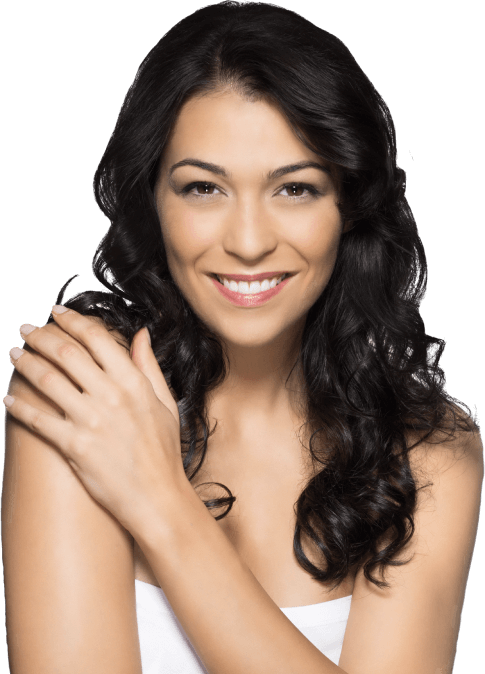

Procedures
Liposuction
WHAT TO EXPECT
- Anesthesia: General
- Length of surgery: 2 – 4 hours
- Outpatient/inpatient: Outpatient
- Adjunct procedures: Mommy Makeover, tummy tuck, Brazilian Butt Lift, body lift, butt lift, arm lift
- Recovery: 4 – 6 weeks
In 2019, more than 265,000 liposuctions were performed, according to a report from the American Society of Plastic Surgeons, the largest holder of plastic surgery statistics. According to that same report, that number held strong through the pandemic in 2020, with more than 211,000 liposuctions performed. If that shows us anything, it is that people have come to rely on this procedure as the safest and most effective method of removing unwanted fat from the body.
But what is liposuction exactly? What does it do, and how does it work?
The Basics
Liposuction is a minimally invasive procedure that removes stubborn pockets of subcutaneous fat throughout the body. This process redefines bodily contours and provides a new shape to the body based on the patient’s aesthetic preferences. It can be highly customized and performed on a host of different body areas, making it one of the most flexible treatments on the market.
While noninvasive treatments are available that claim to provide the same type of improvement, there is nothing currently on the market that can offer the exact extent of correction as liposuction. In some cases, the fat can be harvested and injected into a different body area, slimming one place to bolster another.
Why We Need It
Diet and exercise are the go-to strategies for weight loss and body slimming. But not everyone can achieve their ideal results through those two methods alone. Many people have resistant pockets of fat spread throughout their body that does not go away regardless of how much exercise or dieting they do.
Fat build-up has an uncountable number of causes, ranging from rare congenital conditions to poor lifestyle and diet choices. Weight fluctuation, pregnancy, major life events — everything comes at the risk of fat accumulation. Even if you are vigilant about your health, all of our metabolisms begin to slow down as we age, causing us to gain weight despite maintaining the same type of lifestyle.
In these cases, liposuction is usually the only treatment that can provide relief to those patients. Noninvasives are sometimes an option, but unless the amount of correction needed is very minimal, they will likely not be enough to achieve ideal results. We need liposuction because there are often no alternatives.
Areas It Treats
Here is a semi-comprehensive list of all the areas that liposuction can treat:
- Abdomen
- Ankles
- Arms
- Buttocks
- Hips
- Knees
- Neck
- Thighs
- Upper Arms
- Waist
If you do not see your area of concern listed, don’t worry — the odds are that liposuction can still be performed in that area. If not, we will help you find an alternative treatment to help you achieve your aesthetic goals.
Remember that liposuction is not an alternative to dieting, exercise or a healthy lifestyle. You should only use liposuction to remove fat resistant to those methods, mainly after achieving your ideal fitness level. Liposuction is also not a treatment method for cellulite since that condition is caused by banding between layers of skin and fat and not the subcutaneous fat itself and, in fact, may make cellulite worse.
Candidates
The best candidates for liposuction are healthy, non-smoking individuals close to their goal weight. Ideal patients have stubborn subcutaneous fat, where the fat resides between muscle and skin, as opposed to visceral fat, where the layer of fat resides beneath the muscle and around the abdominal organs.
Our surgeons evaluate the condition of each patient’s skin before recommending liposuction. Patients with good skin elasticity are good candidates for liposuction, whereas patients with loose skin or cellulite are not because these two conditions can result in uneven or dimpled skin. But, these patients may still be well-suited for liposuction and skin removal combination.

Preparing for Surgery
While liposuction is minimally invasive, it is still considered a surgery, which means some precautions may be necessary to ensure your safety and the integrity of your results. These steps are usually minimal — adjusting medications, changing lifestyle habits, etc. — but they can make a huge difference in your treatment success.
You should always follow the list of pre-operative instructions that are given to you prior to your surgery day. You may also be required to have blood work performed or other lab testing based on any preexisting medical conditions or factors that elevate your risk of complications. Generally, everyone is told to stop smoking since it can significantly impact your ability to heal and increase the chances that you have an issue arise during and after surgery.
The Procedure Steps
The process typically begins with the administration of anesthesia. After that, a small incision will be made near whatever body areas are being treated. This could be one or multiple points of entry, but your surgeon will do their best to ensure that as few cuts are made as possible and that they are as hidden and discreet as they can be. Then, a small cannula will be inserted into the incisions and moved around to dislodge fat in the surrounding area. The tube has a suction tip at the end of it, which will pull the fat out of the body. The incisions are then closed, and you will begin your recovery.
The Recovery Process
After your procedure is completed, you will likely be dressed in compression garments to reduce swelling. It is normal to experience some bruising, redness, tenderness, soreness, itchiness, discomfort or mild pain. Many patients can handle the recovery process with over-the-counter medications, but prescription pain medications are available to those who need them.
While it can take several months for swelling to subside, your procedure will heal each week rapidly, and by week eight, you should have a pretty good idea of the type of results you have achieved. You should avoid strenuous activities until your doctor has cleared you to resume them.
Your Results
The results you will experience are permanent as long as you maintain your current level of diet and exercise. Liposuction removes fat, but fat can reaccumulate if you gain weight.
What to Know
At Edina Plastic Surgery — and any other reputable practice — fat removal is limited to five liters or less when conducted on an outpatient basis. For larger volumes, it may be necessary to break the procedure up into separate sessions.
The board-certified surgeons of Edina Plastic Surgery in Minneapolis are knowledgeable in all these methods and will be able to review your options with you. Together, we can create a safe, effective and realistic plan to help you achieve your goals.
Brilliant Liposuction at Edina Plastic Surgery
If you are ready to learn more about how liposuction can help you achieve your goals, or if you would like to schedule a consultation to get the process started, give our Edina, MN, office a call at 952-925-1765. You can also fill out our online contact form to have a member from our team reach out to you at a time better suited to your schedule.

